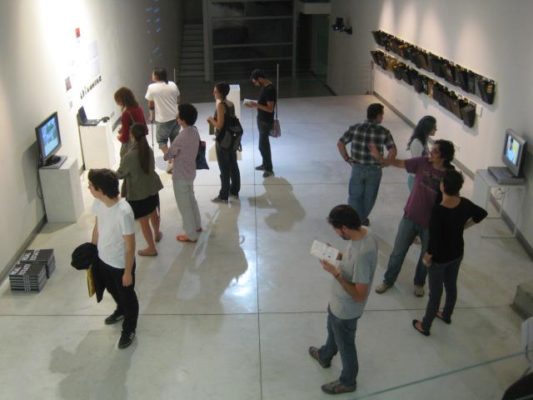Search
To search for an exact match, type the word or phrase you want in quotation marks.
A*DESK has been offering since 2002 contents about criticism and contemporary art. A*DESK has become consolidated thanks to all those who have believed in the project, all those who have followed us, debating, participating and collaborating. Many people have collaborated with A*DESK, and continue to do so. Their efforts, knowledge and belief in the project are what make it grow internationally. At A*DESK we have also generated work for over one hundred professionals in culture, from small collaborations with reviews and classes, to more prolonged and intense collaborations.
At A*DESK we believe in the need for free and universal access to culture and knowledge. We want to carry on being independent, remaining open to more ideas and opinions. If you believe in A*DESK, we need your backing to be able to continue. You can now participate in the project by supporting it. You can choose how much you want to contribute to the project.
You can decide how much you want to bring to the project.

Does art have a use? For whom? And in what sense? The space Off-limits in Madrid proposes, with a group show, a reflection upon the utility of art and its implication within the current social and political context.
Curated by the collective Democracia and the artist Tania Bruguera, the show “Arte útil” (Useful Art) aims to question the utility and function of art today, as well as its capacity as a tool with which to transform reality. The exhibition is based on the works published in the last edition of Nolens Volens, an annual magazine published by the European University in Madrid. This edition reflects upon art as a valid tool for social transformation, and grants the show a theoretical framework, needed in this case, given that the exhibition is more interesting for what it proposes than for what it shows.
Is it possible to expropriate money from financial institutions? It seems it is, if we follow the instructions of the artist Nuria Güell, in which she recommends a series of strategies for expropriating money from financial institutions, creating money from nothing, that is to say like the banks do. The group Todo por la praxis creates guerrilla furniture, a bench that looks like a barricade, a sort of guerrilla town planning that vindicates a different use of public space than that imposed by municipal administrations. What also stands out is the project “Turismo raro” (Weird Tourism) by Unofficial Tourism, in which a series of tourist routes have been created where alternative itineraries are proposed for the city of Madrid, distinct from the conventional ones (bowling alleys, tacky bars, self-run spaces or neon commercial signs). “Real State”, by Domènec, is the simulacra of an estate agent that advertises itself in the Israeli press, in which houses are offered at a good price in the Occupied Palestine Territories. “Rifiuto Con Affeto” (Rejected with love) is a project by the group of artists Publink, an exchange of objects and worn clothes “thrown into the rubbish with love”. The majority of the pieces suppose “symbolic attacks” that have the aim of operating on reality, even the most everyday one, by way of micro-political tactics and subversive techniques in the style of the Situationists.
As opposed to the conception of l´art pour l’art, or money for money, of a bourgeois art doomed to mere contemplation, without comprehension, albeit with a high exchange value, the exhibition proposes the need to reflect upon an art with a utility value. That is to say, an art that serves to build “things” and to change, or at least rethink, the context of our lives. In short, an art aimed at action more than the mere production of merchandise. The emancipating promise of art, and culture in general, even though today it might seem derisory, is the only hope we have left, that of living in utopia, being aware that everything is of course, politics.
More than the question of whether art is useful, which it always was, above all in its role as political-religious propaganda, one would have to ask, as Daniel Villegas so rightly does: Can art stop being useful? Let’s not fool ourselves, today, for the immense majority, contemporary art is totally useless, and not precisely in the sense of Oscar Wilde. As José Luis Marzo says, “Eighty-five percent of the population doesn’t go to museums, eighty-five percent of the population can’t be wrong”. Whether art is useful in the future will depend on the decisions that are taken now with regard to cultural policies, based on a broader education and participation.
In the same way that the world won’t change until there is a redistribution of wealth, art and culture won’t liberate any emancipatory processes until, to quote Jacques Rancière, a distribution of the sensible takes place, with an insistence on inclusive and participatory educational policies.

Rosa Naharro endeavours to think about the present, considering its distinct contexts, through culture and contemporary art. Looking at exhibitions, writing, reading, film, music and even conversations with friends serve as her tools. Understanding and interpreting “something” of what we call the world becomes a self-obligation, as well as taking a certain stance, that doesn´t distance her from it. She combines writing for A*Desk with writing her doctoral thesis at the UCM and working with cultural management projects.
"A desk is a dangerous place from which to watch the world" (John Le Carré)